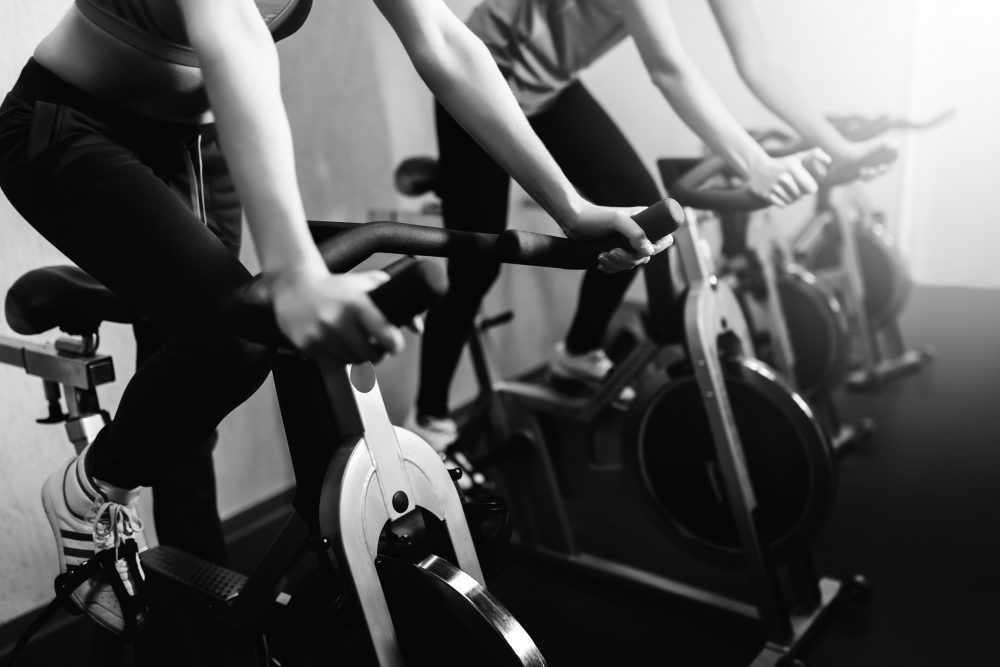Using an outdoor bike ride isn’t always possible. Say it’s raining and you simply aren’t equipped for a rain ride or are a little nervous about slick surfaces. Or maybe you just don’t have a decent road bike.
So instead, you head to the gym and find the stationary bikes. Not everyone approaches a stationary bike with confidence. Sometimes after a spin, we feel like it wasn’t enough of a workout, or too much of one. Or we feel pain from the seat. Regardless, we hop off the bike not certain that we used it correctly. Here’s how you can optimize your workouts and best use an exercise bike.
Before You Begin
- Adjust The Seat Correctly
Some people never take the time to adjust their seats properly. If your seat isn’t adjusted well, back pain can set in after some time. A good basic rule: the top of the seat should be in line with your hip bone. When one pedal is at the bottom of its rotation, your knee should be slightly bent, not fully extended. Most people don’t set the seat high enough and have their knees overly bent during their workout.
- Use the Pedal Straps, Don’t Abuse Them
One of the biggest mistakes people make while using an indoor bike is that they tighten the pedal straps too tight, or don’t wear them at all. The key is to not jam your feet all the way in the cage or strap. Just place your foot far enough in so that the balls of your feet are taking the stress.
- If You Can, Adjust The Distance Between Seat and Handlebars
This can do wonders for your back and for your hands. A good distance between the handlebars and seat is about the length of your forearm.
During the Workout
- Mind The Posture
We see it all the time at the gym: people using machines incorrectly and using dangerous form that can lead to injury. The same applies here. Your posture is critical, and if you aren’t sitting properly on the stationary, you can hurt yourself and make the workout harder than it should be.
Your shoulders should be relaxed, with your elbows bent down towards the ground. The hands should be in a relaxed position. The spine should be straight, with eyes facing forward and head up.
- Pedal Using the Balls of Your Feet, Not Just Your Toes
It might be tempting to only use your toes for pedaling but, in truth, it’s much less effective. Push your entire foot down on the pedal each time, and you’ll see that it’s much more efficient than using only your toes.
- Start With Rhythm
Your first 3-5 minutes on the bike should be all about establishing a rhythm that is difficult but possible to maintain. This is also where you establish the right form for the remainder of your workout. Lengthen your spine, and relax your shoulders.
- What’s the Right Resistance For Me?
There are different varieties of stationary bike workouts. Sometimes, people like to do sprints as a form of interval training. For a distance ride (30-40 minutes or longer), the resistance on the pedals shouldn’t be a struggle to move, but it shouldn’t be totally easy. After riding for a few minutes, you’ll be able to gauge if your resistance level is maintainable.
Here’s a hint to know if resistance is too high: you’re bouncing up and down on the seat to get the pedals around.
- Circular Pedaling
A good pedal rotation is smooth and circular. Good cyclists will actually focus both on the push and the pull of the pedals, not just pushing down at the start of a rotation.
Distance Stationary Cycling Workout: 35 minutes
Warm-Up: 10 minutes
Higher Intensity (70-80 percent exertion): 10 minutes
Sprint/Climb Portion: 5 minutes (up the resistance and really get your heart rate going)
Cool Down: 10 minutes
Interval Workout: 30 minutes
- Warm up for 5 minutes at a slow pace.
- Sprint for 30 seconds, going at about 70-80 percent of your maximum.
- Recover for one minute, going at a slow pace.
- Do another sprint, but this time go for 45 seconds.
- Keep alternating between rest periods and sprints, eventually doing minute-long sprints.


No Comment